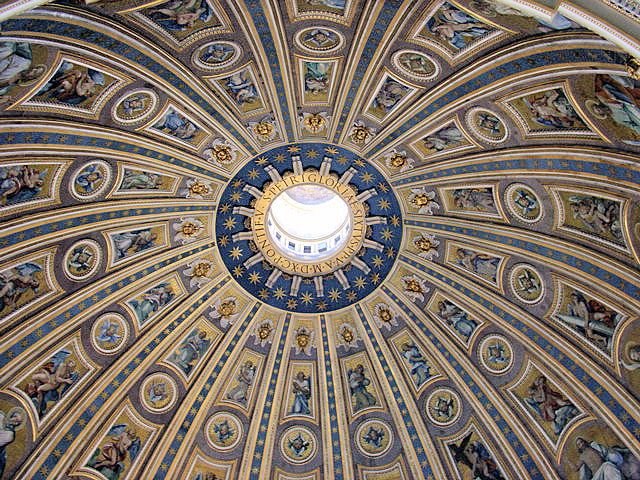Where To Find Michelangelo's Art In Rome
The most innovative and influential artists of all time, Michelangelo di Lodovico Buonarroti Simoni enjoyed a prolonged prolific career which spanned the spectrum of disciplines including painting and sculpture, engineering, architecture or even poetic. Born in a small town close to Arezzo situated in Tuscany, Michelangelo spent his early years in Florence. He was the Renaissance artist made his way to Rome at the age of 1496, for his first visit to Rome. He was repeatedly commissioned throughout his career to make statues, paintings, and create plans for the design of piazzas and churches in the city. Thus the paintings of Rome was enriched with Michelangelo's Art In Rome. Here are his most famous work in the capital.
Essential Resources:
Purchase Artwork Inspired by Michelangelo: Explore and acquire pieces that reflect the unparalleled genius of Michelangelo, offering you a slice of the Renaissance to adorn your spaces.
Explore Michelangelo in Italy: Visit the Sistine Chapel in Rome to marvel at Michelangelo's frescoes and see the iconic David at Florence's Accademia Gallery, showcasing the essence of Renaissance art.
Pietà
Pieta - Michelangelo (Buonarroti)
Pietà is a Latin word that means compassion or pity It is an emotional sculpture that shows Jesus's Virgin Mary grieving over the body of Jesus following his crucifixion. The sculpture was completed at the time Michelangelo was just 24 years young and is a remarkable evidence of his talent and genius in the early years. It combines the Renaissance ideals of naturalism and classical beauty and is awe-inspiring in the details of Mary's dress and Jesus's body. It was requested from Michelangelo's French ambassador for the Holy See, the Cardinal Jean de Bilheres, in 1498 to be a funeral monument but was later moved to the site of St. Peter's Basilica in the 18th century.
Moses
Michelangelo was summoned in Rome around 1505 by the recently elected pope Julius II, who assigned him with the task of sculpting his tomb, a huge structure which was expected to have 20 statues in it and would take five years to finish. However, his work was frequently interrupted by other projects and Pope Julius even ordered Michelangelo to repaint the Sistine Chapel during this time frame. The elaborate tomb never got completed however, Michelangelo designed an even smaller version which now is part of the Basilica di San Pietro in Vincoli. The main focus in the building is the statue depicting the Horned Moses that remains one of his most famous sculptures of Rome and is praised for its dynamism and the quiet power of the figure's seated posture.
Sistine Chapel
Sistine Chapel
Michelangelo’s Sistine Chapel ceiling (1508-1512) is possibly the most well-known masterpiece of art. The intricately decorated ceiling has 343 figures, and tells the narrative that is part of the Old Testament including the Creation and The Fall of Man and the Promise of Salvation through the prophets as well as Jesus' life. Jesus. The central panels, which are nine, are among the most well-known and represent of the Book of Genesis, from God's creation of Earth and humanity to the tale about Noah as well as the Great Flood. It is a masterpiece of extreme clarity, vibrant colours, and the mastery using chiaroscuro techniques for shading it is a testament to Michelangelo's dazzling ability to portray the human figure in a variety of styles and poses, greatly informing the next generation of artists. Twenty years after he finished the ceiling frescoes, he was returned to Rome to create The Last Judgement on the altar of the Sistine Chapel. It depicts the second appearance of Christ and the last judgment by God for all humanity.
St. Peter’s Basilica
St. Peter’s Basilica
Although a number of Renaissance architects and artists contributed to design the first architectural design of St. Peter's Basilica, it was Michelangelo who was chosen to be the main architect of the structure in 1546. Michelangelo unified the visions of earlier architects by incorporating Bramante's Greek Cross as a central element and utilizing Sangallo's designs to create the design of the huge dome, which is still a significant element in his work.
Piazza del Campidoglio
Piazza del Campidoglio
The magnificent concentric piazza which is located upon Capitoline Hill was designed by Michelangelo in 1536. The piazza was ordered from Pope Paul III in anticipation of a visit from Charles V, whom he was hoping to impress with the elegance of Rome. The piazza is unique since it has a view of Vatican City rather than the Roman Forum, which lies behind it. It could be a symbol of looking forward to the future instead of the city's past. Michelangelo also restored one the palaces which were already in the piazza , and constructed the second one directly to its right. Another important feature in the square is the grand cordonata ramp staircase that allowed animals like donkeys and horses to walk up it.
Santa Maria degli Angeli e dei Martiri
Santa Maria degli Angeli e dei Martiri
One of Michelangelo's lesser-known masterpieces in Rome is the Basilica of Santa Maria degli Angeli e dei Martiri in Piazza della Repubblica. It is located inside the antiquated Baths of Diocletian dating back to around 300 AD it's difficult to comprehend the size of the church from its unassuming brick facade. The layout begins with the idea of an Greek cross, similar to St. Peter's Basilica, but it's transept (transverse section that runs over the main body of the structure, creating the arms that make up the structure) is long enough and wide that they appear larger than it actually is. The distinctive shape and dimensions of the church show the vast size of Roman construction as well as Michelangelo's flexibility and the ability to alter design within the constraints of physical space.






